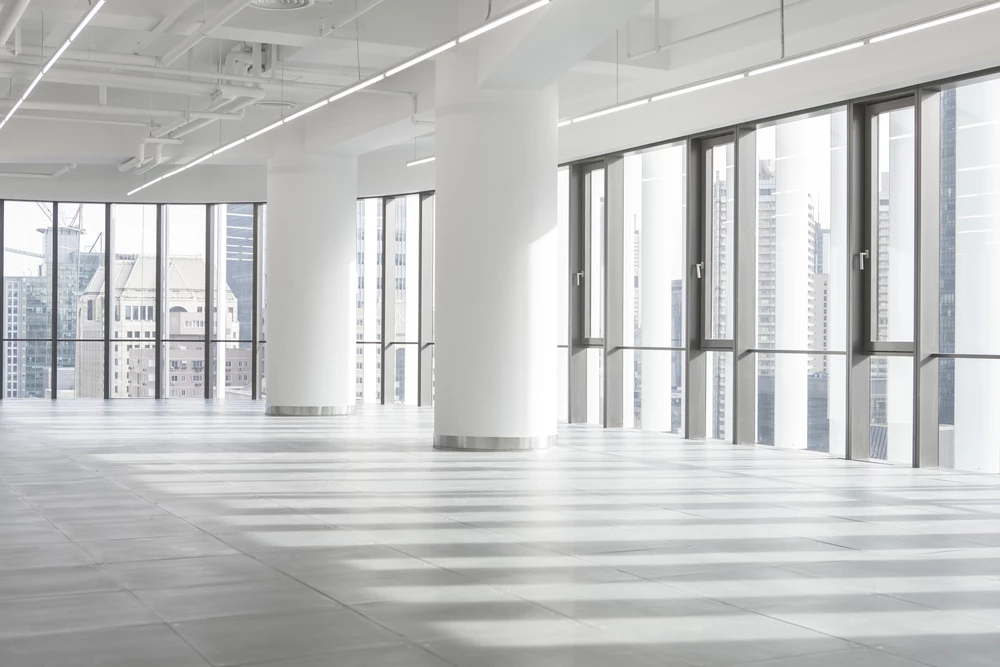
Partner Article
After COVID: What Do Future Offices Look Like?
The World Health Organization (WHO) made a reassuring but agonising announcement in August 2020. Tedros Adhanom Ghebreyesus, head of WHO, claimed there were hopes that the pandemic would be over within two years.
Two years is a significant amount of time, but it’s also a finite amount of time. Eventually, the COVID crisis will come to an end. It’s good to hear, if not setting us up for a frustrating wait.
But the end of COVID will not really be the end of COVID.
Few can doubt that our post-COVID world will still look the same as it did during the pandemic. Not only have our mindsets changed, but we’ve also seen the devastation such an outbreak can wreak.
Our future is going to be shaped by what we’ve experienced.
The COVID-19 Fallout
The human cost of Coronavirus is immeasurable, nobody can deny that. Likewise, nobody can deny the damage it has done to the business world. The financial ramifications of COVID-19 have been nothing short of catastrophic.
Business collapse and the promise of recession will weigh heavily on the minds of entrepreneurs everywhere. As the dust settles in the years to come and we set our sights on the future, most will be looking to secure working practices that ensure that, should another pandemic hit, they’ll be ready.
The initial fallout of COVID-19 has been remote working. From a rarity to normality, work-from-home has become something many are used to. This familiarity has brought with it a move for change. Many people want to remain working from home after the pandemic, and many businesses will be looking to let them.
Working from home has kept businesses afloat during the pandemic, which means that maintaining remote workforces seems like the ultimate protection strategy for future outbreaks. If another pandemic were to hit, and employees were still based at home, the structures would already exist to keep work going.
The major hurdle businesses faced was adapting to work-from-home lifestyles, but now it’s been forced upon them, many have adapted and can continue to reap the benefits. The immediate future looks to be the era of remote work, but does that spell the end of office environments?
Long-Term Changes to Office Life
Offices aren’t going anywhere. Remote work certainly has its place in the future of business operations, but offices have proven to be much too valuable in terms of communication, collaboration and productivity to simply ignore. Some tasks have to be done in-house. Remote work cannot replace all facets of the modern working environment.
But the future office will definitely be different from the offices of today. The first thing we’ll be looking at is a rise in flexible workspaces, developed as a way of enabling remote work while also allowing people to come into the office when necessary. Desk assignments do not support the agile working spaces post-COVID businesses need, which means office booking systems will likely become much more commonplace. Office spaces will shrink with necessity — if your workforce is only coming in two days a week, you don’t need space for everyone all the time.
Offices themselves are also set for a redesign.
One of the major problems with offices and COVID-19 has been proximity to others and the risk of surface contact spreading the virus. As workplaces are built around preventing the spread of contagions, it is likely we’ll see office areas become more like hospitals. In this sense, we’re talking about the construction of materials that are durable and easy to clean, holding up to harsh chemicals. We’ll also see more space put into offices for reduced risk of person-to-person contact.
Perhaps the weirdest new feature is set to be hygiene centres, such as sinks, in open spaces so that workers can clean up after contact with surfaces — like a surgeon preparing for an operation.
Finally, office design will be more conscious of movement flow and layout. Optimisation of movement in a way that limits contact is going to be imperative to reducing the risk of unnecessary interaction that could cause the spread of infection, such as contact with surfaces. From smart doors to contactless lifts, we’ll likely see technology baked into office structure to protect against the risk factors of a pandemic.
This was posted in Bdaily's Members' News section by Exposure Ninja .








 Zero per cent - but maximum brand exposure
Zero per cent - but maximum brand exposure
 We don’t talk about money stress enough
We don’t talk about money stress enough
 A year of resilience, growth and collaboration
A year of resilience, growth and collaboration
 Apprenticeships: Lower standards risk safety
Apprenticeships: Lower standards risk safety
 Keeping it reel: Creating video in an authenticity era
Keeping it reel: Creating video in an authenticity era
 Budget: Creating a more vibrant market economy
Budget: Creating a more vibrant market economy
 Celebrating excellence and community support
Celebrating excellence and community support
 The value of nurturing homegrown innovation
The value of nurturing homegrown innovation
 A dynamic, fair and innovative economy
A dynamic, fair and innovative economy
 Navigating the property investment market
Navigating the property investment market
 Have stock markets peaked? Tune out the noise
Have stock markets peaked? Tune out the noise
 Will the Employment Rights Bill cost too much?
Will the Employment Rights Bill cost too much?